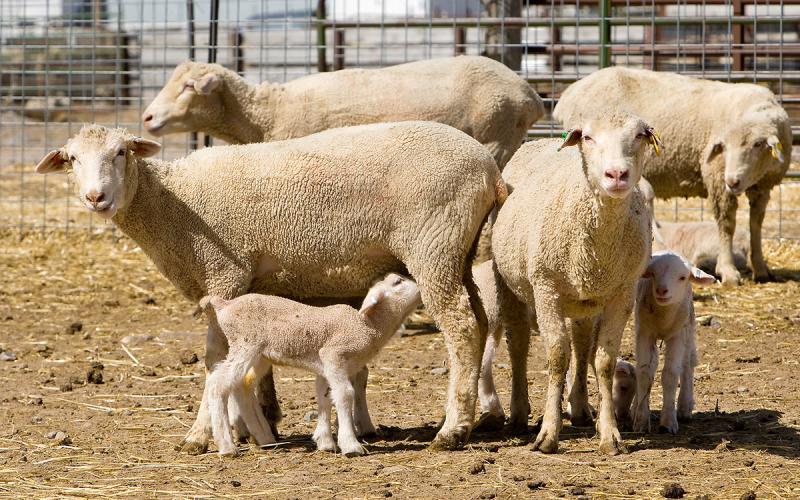Efforts to manage the reproductive cycle of the ewe have been a focus of producers and researchers for decades. By nature sheep are seasonal breeders with active ewe estrus cycles expected from late-August until January in the Upper Midwest and in a state of anestrous (non-cyclic) for the other months. Recently a commercial progesterone intra-vaginal device, the EAZI-BREED sheep CIDR (controlled internal drug release) was approved in the US to synchronize estrus in mature ewes during the anestrous period. With this technology producers are more enabled than ever before to develop fall lambing systems and to synchronize lambing periods resulting in labor, facility and management efficiencies. The EAZI-BREED sheep CIDR was developed in New Zealand during the late 1980’s. It is simple to use and cost effective for application in commercial sheep production and seed stock flocks.
In 2010 a trial was conducted at the SDSU Sheep Unit to demonstrate the use of the EAZI-BREED sheep CIDR with one-hundred sixty-two Polypay sired ewes. Ewes were assigned to CIDR treatment groups of 6 d or 12 d, all ewes were fitted with a CIDR on April 28, 2010. Treatment groups were exposed to fertile yearling and mature rams at the time of CIDR removal for 4 days then re-exposed 15 days later for 6 more days, thus ewes were exposed to rams for 2 possible estrus cycles. No teaser or intact rams were exposed to ewes until CIDR removal, during ram exposure the ewe to ram ratio was 8:1. In summary the study showed no difference between 6 d and 12 d CIDR insertion on recorded estrus activity and ewe fertility, 71% of the ewes lambed in October 2010.


